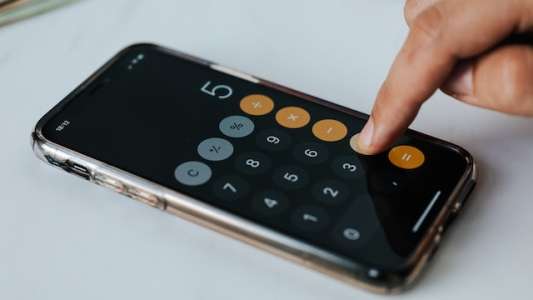Whilst you may have been familiar with converting percentages and fractions in school, many of us let these basic mathematical skills get rusty as we advance with our education and career.
Questions involving percentages and fractions are commonly encountered in numerical reasoning tests, which form part of many recruitment processes. Employers like to assess a candidate’s cognitive ability through online psychometric testing, as the results of these tests have been shown to provide a good indication of future performance in the role.
To achieve a high score and display your mathematical ability, you’ll need to be confident in quickly converting percentage values.
Even if mathematics isn’t your strongest subject, turning percentages into fractions is simple if you familiarise yourself with the correct method.
A step-by-step guide to converting percentages into fractions
In a conversion question, you’ll be asked to turn a particular percentage into a fraction. As calculators are usually not permitted in numerical reasoning tests, you’ll need to perform this calculation manually.
You may find it useful to have blank note paper to hand during your assessment, so you can jot down your workings according to the stages below.
The key to cracking these questions is practice so, if you’re finding them difficult when sitting sample papers, focus on learning the steps until you feel ready to tackle any conversion.
Step 1: Express the percentage as a fraction
Take the percentage you have been given and express it as a fraction. This can be achieved by writing the percentage over 100.
For example: %/100
So, for the question ‘ Express 22.5% as a fraction’, you’d have 22.5/100.
Note that the top value of a fraction is known as the numerator, and the bottom value is called the denominator.
Step 2: Write the numerator as a whole number
If the numerator is not a whole number, multiply the value by 10 for every digit to the right of the decimal place. Then, do the same to the denominator.
For example: If after step 1 you have 22.5/100, multiply 22.5 x 10 and then 100 x 10.
This will give you 225/1000
You now have what is known as a decimal fraction.
If the numerator is already a whole number, you can skip this stage.
Step 3: Simplify the fractions
Next, you need to reduce the fraction to its lowest terms. This means you need to express the fraction as simply as possible.
This is achieved by dividing the numerator and denominator. You’ll need to be able to divide them exactly for the resulting numbers to be valid.
Start by seeing if you can divide the values by 2. If not, try dividing by 3, 5, 7, 11 and so on.
Note there’s no point checking 4, as it’s a multiple of 2 – this is the same for other multiples like 6 and 8. Instead, use only prime numbers.
For example: 225/1000 doesn’t divide exactly by 2 or 3, as you’ll end up with a decimal point.
Both values do, however, divide by 5.
225 ÷ 5 = 45
1000 ÷ 5 = 200
So, 45/200
These values can also be divided by 5.
45 ÷ 5 = 9
20 ÷ 5 = 40
We now have a fraction of 9/40.
Alternatively, if you are good with your multiplication tables, you can go straight to identifying the greatest common factor of the denominator and numerator. Which, in this case, is 25.
225 ÷ 25 = 9
100 ÷ 25 = 40
= 9/40
So, to answer our question, 22.5% expressed as a fraction is 9/40.
Step 4: If the fraction is improper, convert it to a mixed number
If you are left with an improper fraction – where the numerator is larger than the denominator – you’ll need to convert it to a mixed number. To do this, see how many times the denominator fits into the numerator.
Note you can tell if your fraction will need to be expressed as a mixed number as, at the end of the first step, the numerator will be larger than the denominator.
Example questions
To explore the above method again and see how it can be applied in different circumstances, here are some more worked examples.
Example question 1
Question: Convert 32% to a fraction.
Step 1: Write the percentage over 100. So, 32/100.
Step 2 : 32 is already an integer (there aren’t any numbers after the decimal point), so Step 2 is not required.
Step 3: Identify the greatest common factor. In this case, it’s 4.
32 ÷ 4 = 8
100 ÷ 4 = 25
Therefore, the fraction, when reduced to its simplest form, is 8/25.
There’s no need for Step 4, as 8/25 is not an improper fraction.
Answer: 32% expressed as a fraction is 8/25.
Example question 2
Question: Express 55% as a fraction.
Step 1: Write the percentage over 100. So, 55/100.
Step 2 : 55 is already an integer, so Step 2 is not required.
Step 3: Identify the greatest common factor. In this case, it’s 5.
55 ÷ 5 = 11
100 ÷ 5 = 20
Therefore, the fraction, when reduced to its simplest form, is 11/20.
There’s no need for Step 4, as 11/20 is not an improper fraction.
Answer: 55% expressed as a fraction is 11/20.

